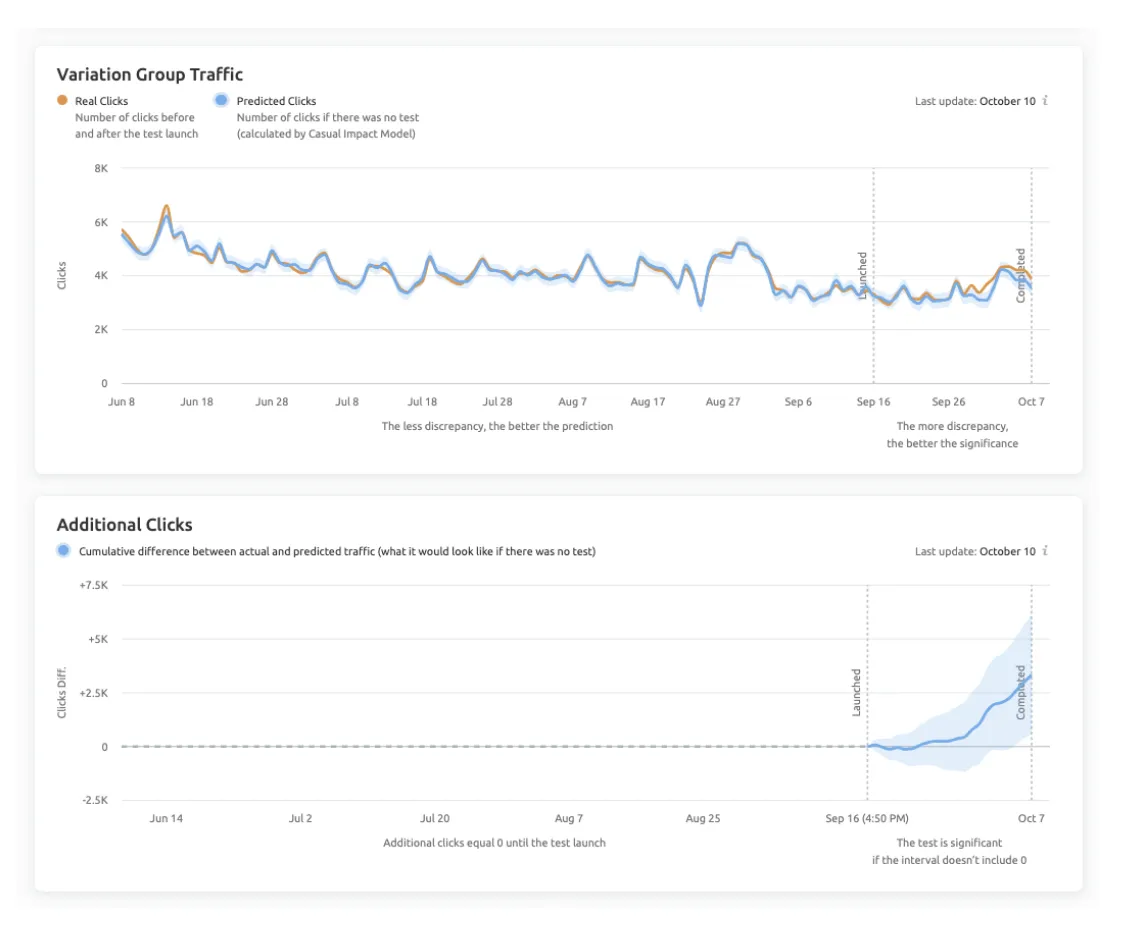Semrush: Heading structure for better SEO
What?
A clear headline structure is one of the most underestimated elements of SEO. Google uses headings not only to understand what a page is about but also to interpret the importance and relationships between topics. For a major e-commerce company in Belgium, we examined how the semantic setup of headings (H1, H2, H3) influences indexation and click behavior.
Many websites suffer from inconsistent heading levels: H3s that should fall directly under the H1, or visual headings that don’t match their HTML structure. It may seem like a small detail, but it directly affects how search engines interpret and prioritize content.
How
Strategic restructuring of headlines

Using SplitSignal, we conducted a controlled SEO test. The H3 headings on category pages were restructured into H2s so they sat directly under the main H1. This created a more logical semantic connection between the core topic and its subtopics.
The test was executed across 335 category pages, evenly split between test and control groups. This setup allowed us to isolate the impact of the heading adjustment itself, independent of seasonal trends or content updates.
Beyond the technical implementation, we also considered user experience. A clearer heading hierarchy makes content easier to scan and understand. This indirectly increases click-through rate (CTR) from search results, as Google can better identify which sections of a page are most relevant to specific search intents.
Result
The test results were clear: a well-structured headline hierarchy had a measurable impact on organic performance. Within weeks, we observed a 4.5% increase in organic clicks. With a confidence level of 99%, the result was statistically significant.
The improved structure helped search engines interpret page context more accurately, leading to higher visibility and more relevant impressions. More importantly, the improvement was consistent across multiple product categories.
While SEO often focuses on content or backlinks, this case proves that structural elements like semantic HTML can be equally powerful in driving performance.

From technical optimization to strategic structure.
By improving headline hierarchy, we gave Google clearer signals about the layout and purpose of each page. This resulted in better indexation and higher-quality traffic. The case reinforces that even small technical optimizations can deliver measurable impact when applied at scale.
For organizations, this is a reminder that SEO is not a one-time effort but an ongoing balance of content, technical precision, and user experience. The way information is structured plays a defining role in how search engines rank and evaluate relevance.
The next step is to apply this approach across other content types — including articles, guides, and landing pages. Structural consistency across an entire domain strengthens semantic clarity and overall site authority.
It also highlights an opportunity to bring data and content teams closer together. When both sides align on how users and search engines read content, optimization becomes sustainable and insight-driven rather than reactive.
